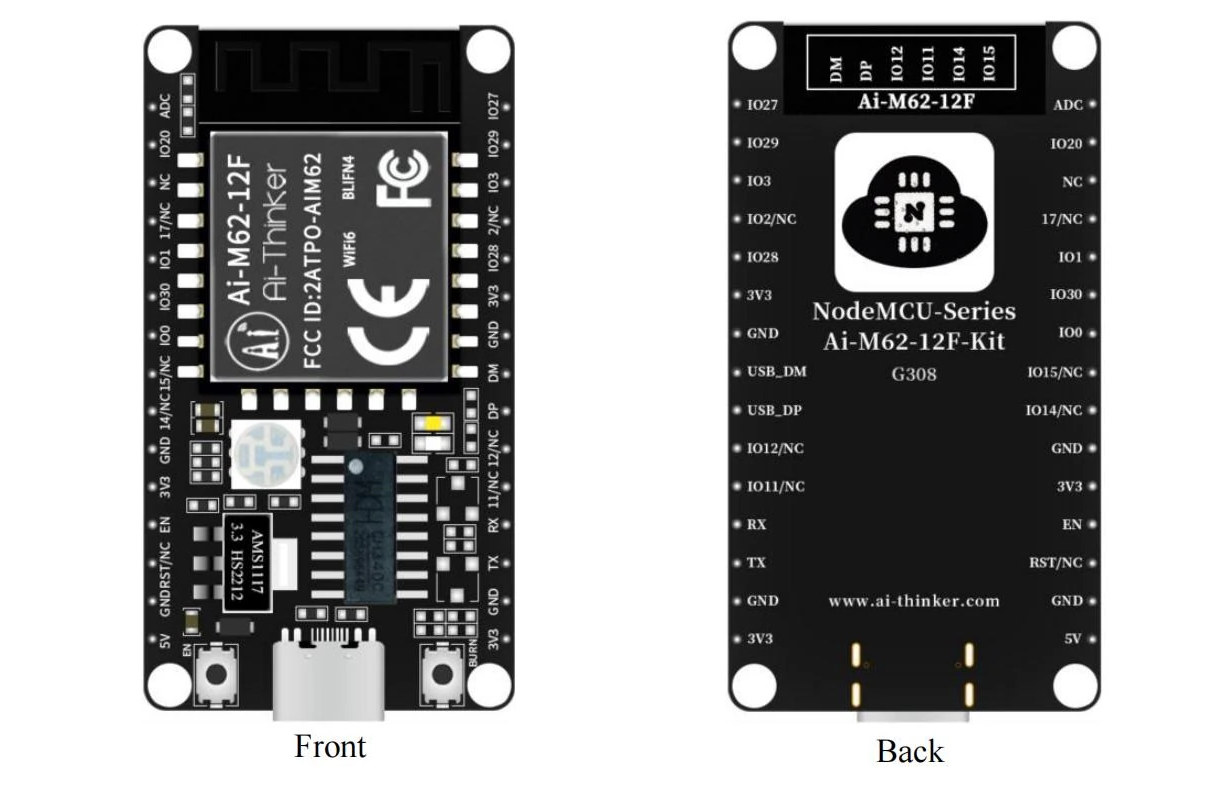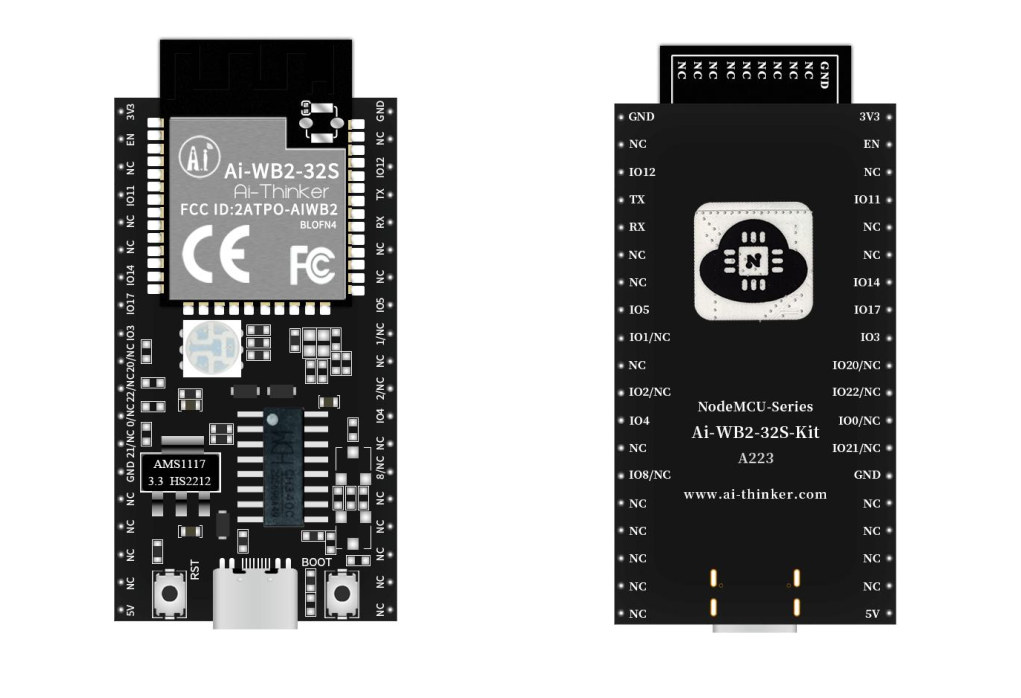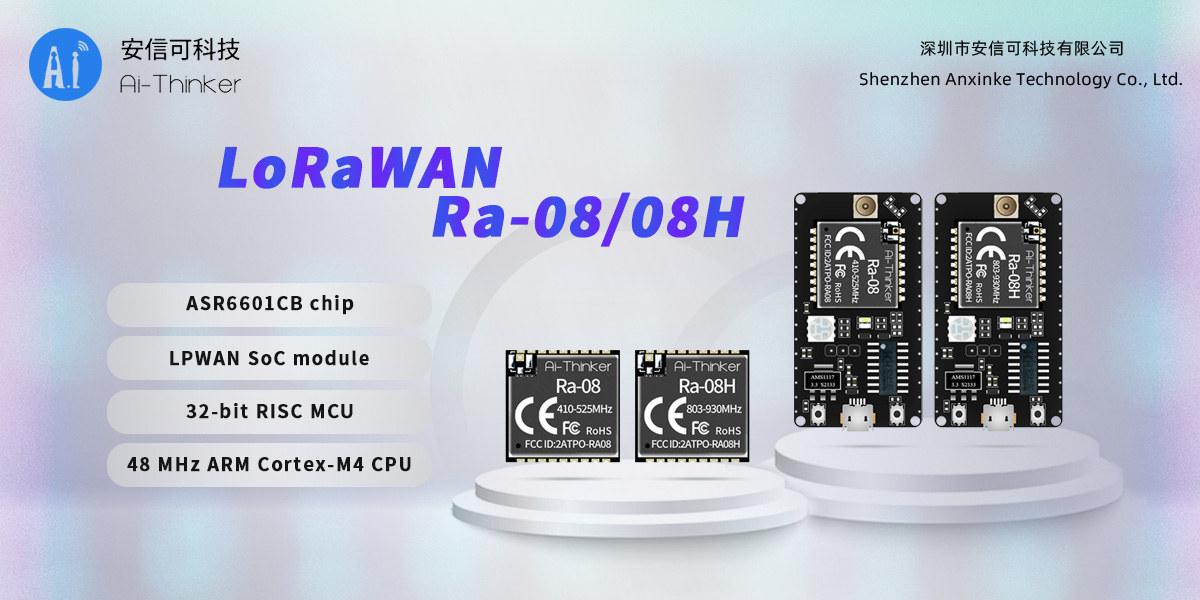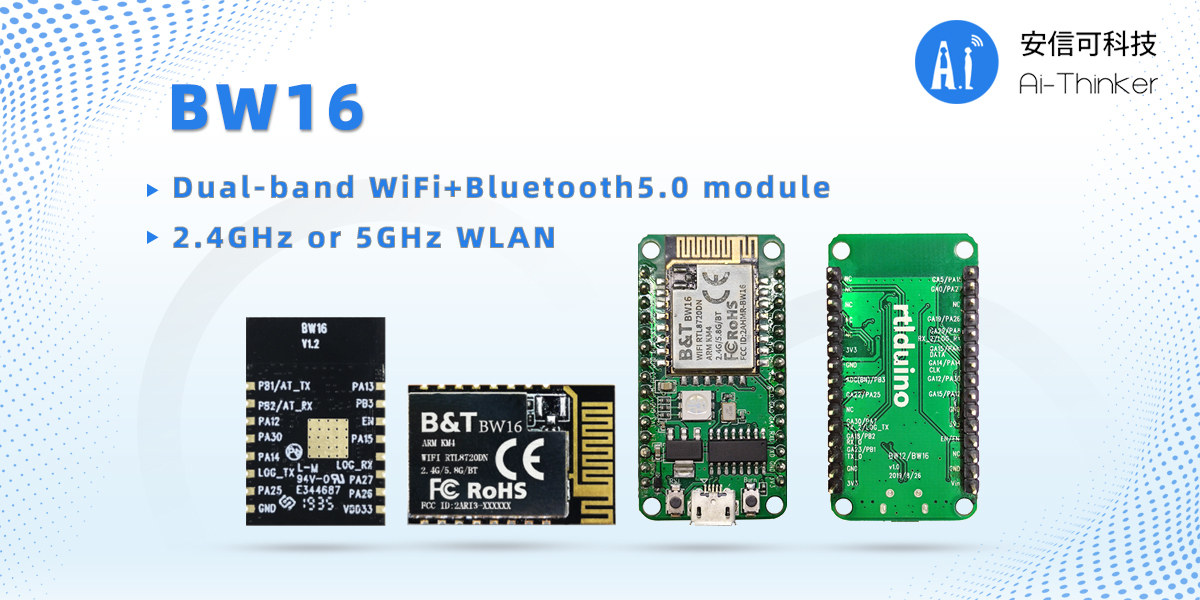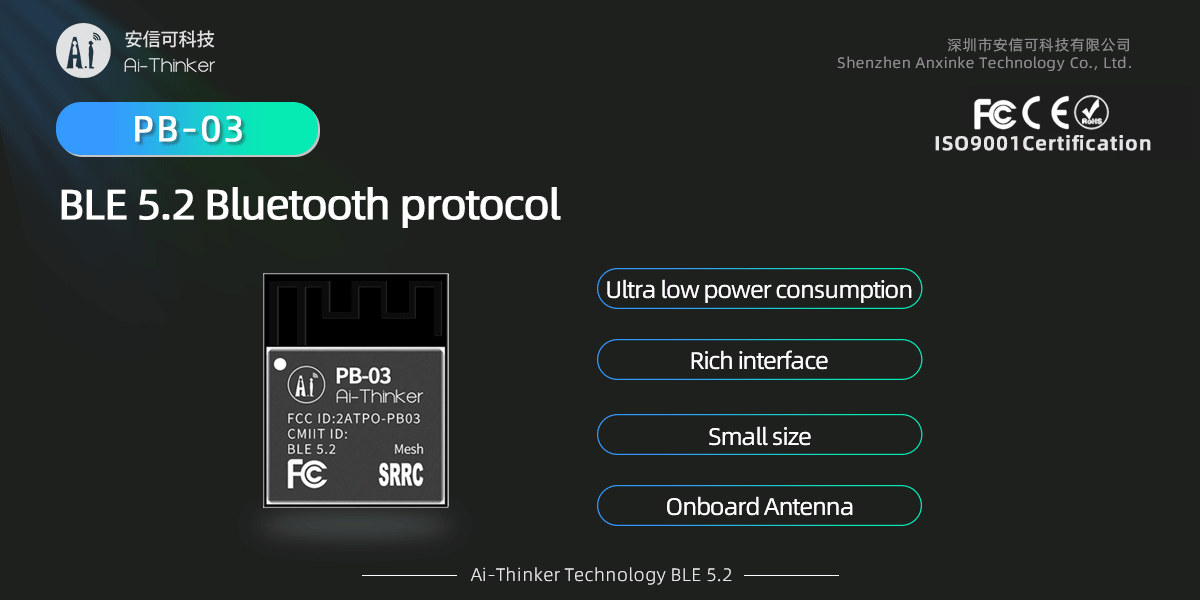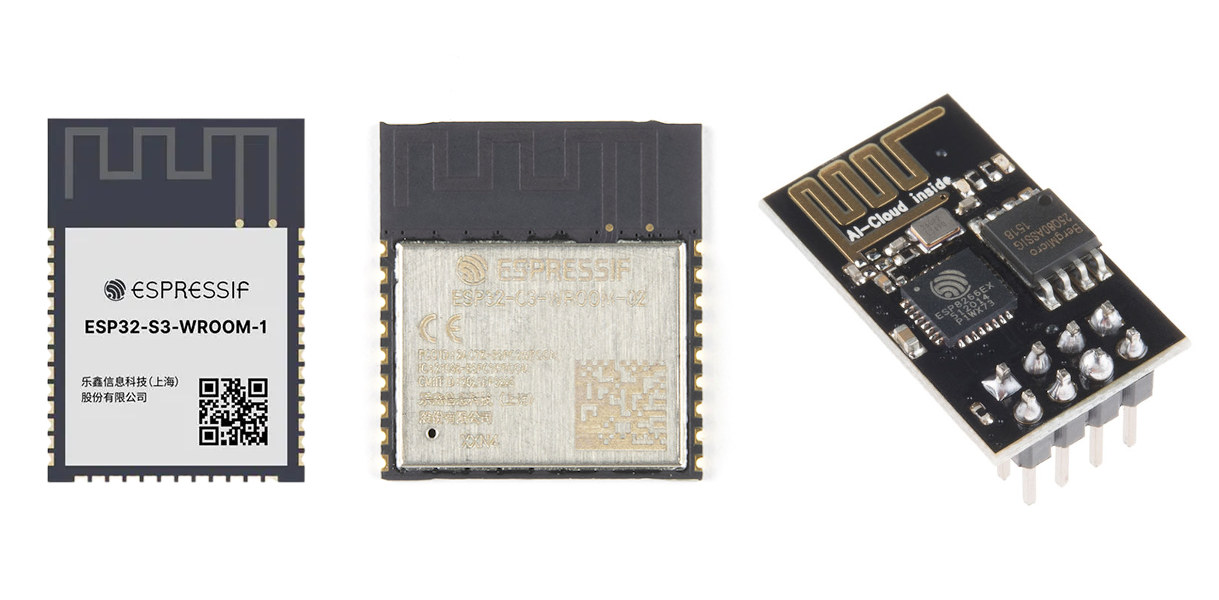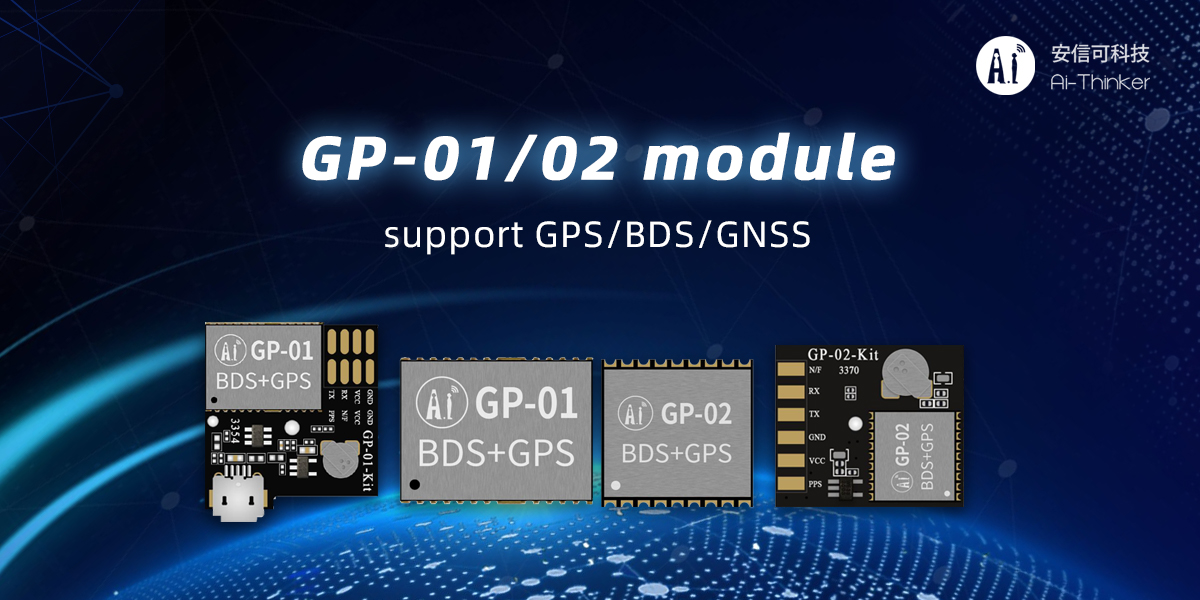Ai Thinker Ai-M62-12F-Kit is a development board based on Bouffalo Lab BL616 RISC-V microcontroller with 2.4 GHz WiFi 6, Bluetooth 5.2 LE, and an 802.15.4 radio (Zigbee/Thread), plus thirty I/O pin for expansion. We had already covered the tiny Sipeed M0S module based on BL616 MCU earlier this year along with its M0S dock board that exposed eight GPIO pins via a 12-pin header, and the “NodeMCU” Ai-M62-12F basically offers the same features but with many more I/Os thanks to two 15-pin headers, as well as an RGB LED and two user-programmable LEDs. Ai-M62-12F-Kit specifications: MCU – Bouffalo Lab BL616 32-bit RISC-V (RV32IMAFCP) microcontroller @ up to 320 MHz (384 MHz overclocked) with 480KB SRAM, 4MB flash, 2.4 GHz WiFi 6, Bluetooth 5.2 dual mode, and 802.15.4 radio (Zigbee) Antenna – PCB antenna USB – 1x USB Type-C port for power and programming I/Os – 2x 15-pin headers with Storage […]
AI Thinker Ai-WB2 modules feature BL602 RISC-V MCU with WiFi and BLE connectivity
AI Thinker has just introduced a new family of wireless IoT modules with the Ai-WB2 equipped with Bouffalo Lab BL602 RISC-V microcontroller offering both 2.4 GHz WiFi 4 and Bluetooth 5.0 LE connectivity. There are ten different modules to choose from, probably to keep mechanical and electrical compatibility with ESP8266 and ESP32 modules, and the company expects customers to integrate those into Internet of Things (IoT) products, mobile devices, wearables, Smart Home appliances, and more. Ai-WB2 modules share the following specifications: Wireless MCU – Bouffalo Lab BL602 32-bit RISC-V microcontroller @ up to 192 MHz with 276KB SRAM, 2.4 GHz WiFi 4 and Bluetooth 5.0 LE connectivity Storage – 2MB or 4MB SPI flash WiFi range – Up to about 500 meters (typical) I/Os – SDIO, SPI, UART, I2C, IR receiver, PWM, ADC, DAC, and GPIO (except Ai-WB2-01S with just UART/PWM/GPIO/ADC) Power Supply – 2.7V to 3.6V > 500mA Power […]
Ai-Thinker Ra-08 LoRaWAN module features ASR6601 chip (Sponsored)
Ai-Thinker Ra-08/08H are new LoRaWAN modules based on ASR Microelectronics ASR6601 module featuring a 48MHz ARM Cortex M4 microcontroller and Semtech SX1262 transceiver allowing long-range, low power communication for the Internet of Things. Both LoRaWAN modules share most of the same specifications, but the Ra-08 module operates in the 410-525MHz frequency band, while the Ra-08H module works in the widely used 803MHz to 930MHz band. Ai-Thinker also provides a development kit for each module. Ai-Thinker Ra-08/Rs-08H key features and specifications: Programmable embedded Arm Cortex-M4 MCU with 128 KB of Flash and 16 KB of SRAM LoRa radio Sensitivity – -138 dBm @ SF12/125KHz Tx power – Up to +22dBm Frequencies Ra-08 – 410 MHz to 525 MHz Ra-07H – 803 MHz to 930 MHz Spread spectrum factor – SF5, SF6, SF7, SF8, SF9, SF10, SF11, SF12 LoRa, (G)FSK, BPSK, and (G)MSK modulation Bit rate up to 62.5 Kbps in LoRa […]
Ai-Thinker Hi-series WiFi modules support HarmonyOS (Sponsored)
Ai-Thinker Hi-series WiFi modules feature Hisilicon Hi3861/Hi3861L 32-bit RISC-V microcontroller with 2.4GHz 802.11b/g/n WiFi 4 and support for HarmonyOS for IoT projects. The new Hi-12F module even got certification for HarmonyOS “S identification” meaning the Hi-12F module supports HarmonyOS Connect for the Smart Home which used to be called “Works With HUAWEI HiLink” or “Powered by HarmonyOS”. Some of the highlights for Ai-Thinker Hi-series WiFi module include: Integrated high-performance 32-bit RISC-V microprocessor (Hi3861V100/Hi3861LV100) with 352KB SRAM, 288KB ROM, and 2MB Flash IEEE 802.11 b/g/n WiFi 4 up to 72.2Mbps @ HT20 MCS7 with STA and AP modes (Up to 6 clients in AP mode). Baseband and RF circuits with power amplifier PA, low noise amplifier LNA, RF balun, antenna switch, power supply management Multiple Security Capabilities with a built-in eFUSE, support for secure storage, and hardware ID Rich peripheral interfaces with UART, SPI, I2C, GPIO, ADC, PWM, I2S, SDIO, etc… […]
Ai-Thinker BW16 is a dual-band WiFi & Bluetooth 5.0 IoT module (Sponsored)
Many users prefer the ESP32 when implementing WiFi & Bluetooth into their IoT projects. But Ai-Thinker BW16 offers dual-band WiFi 4 & Bluetooth 5.0 connectivity through Realtek’s RTL8720DN chipset which may provide more reliable connectivity where the 2.4 GHz band is crowded. The module integrates an Arm Cortex-M4F compatible high-performance MCU, an Arm Cortex-M0 compatible low power MCU, WiFI 802.11 a/b/g/n, MAC, Bluetooth and RF baseband, and provides a set of configurable GPIO ports to control peripheral devices. BW16 module One significant difference between BW16 and ESP32 module is that it has two serial port interfaces, so attention should be paid to the wiring of the UART interfaces. The following diagram shows the two serial interfaces of the BW16 module. One of the module serial interfaces is used to send and receive AT commands to control connectivity from a host processor or microcontroller, while the other serial port is used […]
PB-03 – A Bluetooth LE 5.2 module for the Smart Home, wearables, IoT, etc… (Sponsored)
What changes does Bluetooth LE 5.2 (BLE 5.2) bring? Maybe PB-03 module can tell you. PB-03 is a BLE module developed by Shenzhen Ai-Thinker Technology based on PHY+ PHY6252 32-bit microcontroller (see PDF datasheet) that offers high integration and low power consumption down to 0.3uA in OFF mode, and is well suited to various applications such as IoT, mobile devices, wearable electronic devices, and smart homes. PB-03 module’s highlights Ai-Thinker PB-03 provides an upgrade to earlier PB-01/02 modules with the following highlights: MCU – PHY6252 microcontroller with 256KB flash, 64KB SRAM Supports BLE 5.2 and Bluetooth Mesh Equipped with an on-board PCB antenna Up to 2 Mbps data rate I/Os – UART, PWM, ADC, I2C, SPI, PDM, DMA, and up to 19 IOs. Security – AES-128 encryption hardware Power consumption (PHY6252) 0.3uA @ OFF Mode (IO wake up only) 1uA @ Sleep Mode with 32KHz RTC 3.5uA @ Sleep Mode […]
A comparison of ESP32-S3, ESP32-C3 and ESP8266 modules
The ESP32-S3 chip is equipped with an Xtensa 32-bit LX7 dual-core processor clocked at up to 240 MHz, supports 2.4 GHz Wi-Fi and Bluetooth 5 LE, and boasts AI instructions, as well as a reliable security encryption engine, specially built for the AIoT market. Modules based on the ESP32-S3 processor bring many benefits to designers with support for Bluetooth Long Range mode, plenty of resources with 512 KB SRAM (TCM), 45 programmable GPIO pins, and rich communication interfaces. They can also handle high-speed Octal SPI flash with higher capacities, as well as off-chip PSRAM. So, what are the differences between the new ESP32-S3 modules, and typical ESP32-C3 and ESP8266 modules? Let’s find out. Jean-Luc Aufranc (CNXSoft)Jean-Luc started CNX Software in 2010 as a part-time endeavor, before quitting his job as a software engineering manager, and starting to write daily news, and reviews full time later in 2011. www.cnx-software.com
Tiny, high-precision GPS modules target UAV’s, wearables (Sponsored)
With the rapid development of the Internet of Things, positioning requirements are getting more strict notably with the need for higher precision and smaller GNSS modules. If you are looking for compact GPS modules that support a variety of satellite navigation systems, including China’s Beidou satellite navigation system BDS, the United States’ GPS, and Russia’s GLONASS with low power consumption (3.3V, 30mA), you may consider Ai-Thinker’s GP-01 and GP-02 GPS modules offering the smallest size. The GP-01 module has a total of 24 interfaces with five GPIO pins, while the GP-02 module has a total of 18 interfaces with three GPIO pins. These two modules are also available in development boards for ease of evaluation and development. Both are cheap, reliable, and based on the state of the art technologies. Thanks to its small size of only 10.3 x 9.9 x 2.4 mm, the GP-02 module can be easily embedded […]


